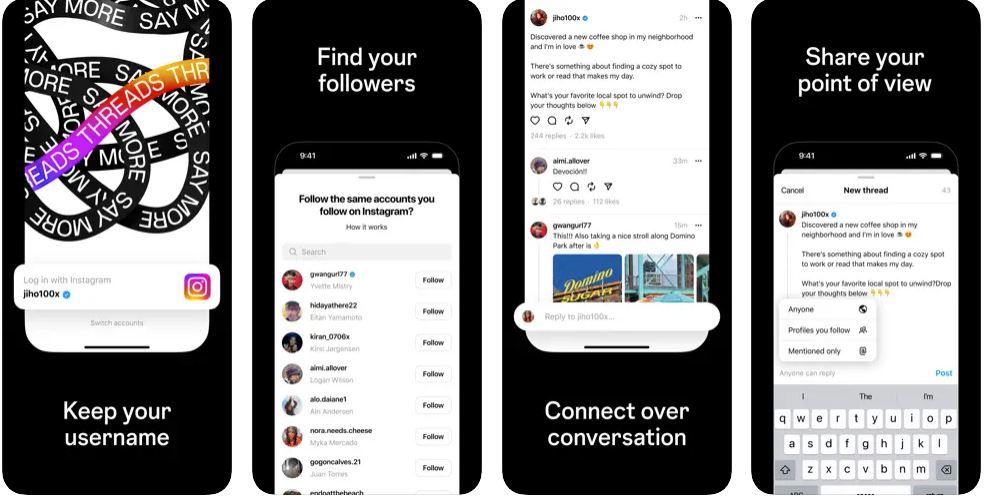While initial excitement has subsided, Threads continues to position itself as a strong alternative to Twitter today. Meanwhile, Meta, the social network giant, has taken a significant step forward by launching its long-awaited API for developers.
Please follow us on Twitter and Facebook
Initially released with limited access in March, Threads has now made its API available to everyone as of today. This toolkit allows interested parties to seamlessly integrate Threads with various applications and websites. Beyond mere integration, the API also paves the way for the development of third-party clients, which played a crucial role in Twitter’s widespread adoption.
The Threads API enables the development of automated methods to share posts across the social network through plugins or dedicated platforms. Moreover, it offers capabilities to manage responses, quotes, and reactions to posts, along with detailed insights into follower interactions. Meta has highlighted that access to such analytics was among the most requested features.
“Stats are one of the most requested features for the API, so we make it possible for people to see key metrics: the number of views, likes, replies, repeat posts and quotes at the account and media level, and the number of followers as well as the demographic data of the followers of your account,”
they indicated from Threads.
Now that the Threads API is Available, Does It Pave the Way for Third-Party Clients?

During the limited access testing phase, Threads allowed social media management platforms like Hootsuite and Sprout Social to connect to its API. This enabled users of these platforms to experiment with automating posts across various networks, including Meta. However, the most intriguing potential lies in the possibility of third-party clients being developed.
Threads recognizes this as a promising avenue for further growth. Allowing users the freedom to choose where they interact with the social network is crucial for gaining public favor. Additionally, the memory of past controversies with Situations has understandably stirred user discontent. It remains to be seen if Meta will leverage the new API to facilitate the development of unofficial clients.
Read Also: Meta Introduces Bonus Program for Creators on Threads
To streamline developer onboarding, Threads has released a comprehensive documentation catalog for its API. Moreover, they have introduced a sample application on GitHub, which is open source and serves as a practical tool for testing the API and resolving issues.
With the Threads API now accessible, it is anticipated that we will soon witness the emergence of initial apps, tools, or services integrated with the social network. Menlo Park holds high expectations for this launch and its potential to expand the reach of their latest platform.
“We believe [the API] will allow creators, developers, and brands to create their own unique integrations, manage their Threads presence at scale, and easily share inspiring content with their communities,”
they stated from Meta.
Read Also: Seven Tips to Maximize Your Experience on Threads, Instagram’s Alternative to Twitter




